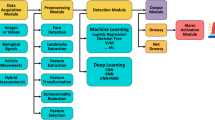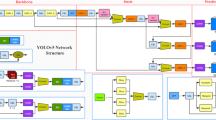Abstract
The automotive industry is expanding its efforts to develop new techniques for increasing the level of intelligent driving and create new autonomous cars capable of driving with more intelligent capabilities. Thus, companies in this sector are turning to the development of autonomous cars and more specifically developing software along with more artificial intelligent algorithms. However, to be able to trust these systems, they must be developed very carefully, and use techniques that can increase the level of recognition that will consequently improve the level of safety. One of the most important components in this respect for road users is the correct interpretation of traffic sings. This paper presents a deep learning model based on convolutional neural networks and image processing that can be used to improve the recognition of traffic sings autonomously. The results are focused on difficult cases such as images with lighting problems, blurry traffic sings, hidden traffic sings, and small images. Hence, real cases are used in this study for identifying the existing problems and achieving good performance in traffic signal recognition. Finally, as a result, the configuration of the neural architecture based on three phases of convolutions proposed shows a validation accuracy of 99.3% during the data training. Another comparison carried out with the model ResNet-50 obtained an accuracy of 88.5%. Thus, for this type of application, a high validation accuracy is required as the results of our model demonstrated.



















Similar content being viewed by others
References
Abbasi M, Shahraki A, Taherkordi A (2021) Deep learning for network traffic monitoring and analysis (ntma): a survey. Comput Commun 170:19–41. https://doi.org/10.1016/j.comcom.2021.01.021
Abdoos M, Mozayani N, Bazzan ALC (2014) Hierarchical control of traffic signals using q-learning with tile coding. Appl Intell 40(2):201–213. https://doi.org/10.1007/s10489-013-0455-3
Badue C, Guidolini R, Carneiro RV, Azevedo P, Cardoso VB, Forechi A, Jesus L, Berriel R, Paixão TM, Mutz F, de Paula Veronese L, Oliveira-Santos T, De Souza AF (2021) Self-driving cars: a survey. Expert Syst Appl 165:113816. https://doi.org/10.1016/j.eswa.2020.113816
Bahlmann C, Zhu Y, Ramesh V, Pellkofer M, Koehler T (2005) A system for traffic sign detection, tracking, and recognition using color, shape, and motion information. 2005 IEEE Proceedings. Intelligent Vehicles Symposium, pp 255–260, 6–8 June 20055
Cireşan D, Meier U, Masci J, Schmidhuber J (2012) Multi-column deep neural network for traffic sign classification. Neural Netw 32:333–338. https://doi.org/10.1016/j.neunet.2012.02.023
de la Escalera A, Armingol J, Mata M (2003) Traffic sign recognition and analysis for intelligent vehicles. Image Vis Comput 21(3):247–258. https://doi.org/10.1016/S0262-8856(02)00156-7
Houben S (2011) A single target voting scheme for traffic sign detection. Paper presented at the 2011 IEEE Intelligent Vehicles Symposium (IV), pp 124–129, 5–9 June 2011
Huang Z, Yu Y, Gu J (2014) A novel method for traffic sign recognition based on extreme learning machine. Paper presented at the 11th World Congress on Intelligent Control and Automation, pp 1451-1456, 29 June-4 July 2014
Krizhevsky A, Sutskever I, Hinton GE (2017) Imagenet classification with deep convolutional neural networks. Commun ACM 60(6):84–90. https://doi.org/10.1145/3065386
Kryvinska N, Poniszewska-Maranda A, Gregus M (2018) An approach towards service system building for road traffic signs detection and recognition. Procedia Comput Sci 141:64–71. https://doi.org/10.1016/j.procs.2018.10.150
Kuo CCJ (2016) Understanding convolutional neural networks with a mathematical model. J Vis Commun Image Represent 41:406–413. https://doi.org/10.1016/j.jvcir.2016.11.003
Loy G, Barnes N (2004) Fast shape-based road sign detection for a driver assistance system. Paper presented at the 2004 IEEE/RSJ International Conference on Intelligent Robots and Systems (IROS) (IEEE Cat. No.04CH37566), pp 70–75, 28 Sept.-2 Oct. 2004
Qian R, Zhang B, Yue Y, Wang Z, Coenen F (2015) Robust chinese traffic sign detection and recognition with deep convolutional neural network. Paper presented at the 2015 11th International Conference on Natural Computation (ICNC), pp 791–796, 15–17 Aug. 2015
Redmon J, Farhadi A (2018) Yolov3: An incremental improvement. CoRR arxiv:1804.02767
SAE (2018) Taxonomy and definitions for terms related to driving automation systems for on-road motor vehicles. ISO/SAE PAS 22736:2021, https://www.iso.org/standard/73766.html. Accessed 10 Nov 2021
Shi L, Prevedouros P (2016) Autonomous and connected cars: Hcm estimates for freeways with various market penetration rates. Transp Res Procedia 15:389–402. https://doi.org/10.1016/j.trpro.2016.06.033
Shi M, Wu H, Fleyeh H (2008) Support vector machines for traffic signs recognition. Paper presented at the 2008 IEEE International Joint Conference on Neural Networks (IEEE World Congress on Computational Intelligence), pp 3820–3827, 1–8 June 2008
Srivastava S, Sahana SK (2017) Nested hybrid evolutionary model for traffic signal optimization. Appl Intell 46(1):113–123. https://doi.org/10.1007/s10489-016-0827-6
Stallkamp J, Schlipsing M, Salmen J, Igel C (2011) The german traffic sign recognition benchmark: A multi-class classification competition. Paper presented at the 2011 International Joint Conference on Neural Networks, pp 1453–1460, 31 July-5 Aug. 2011
Stallkamp J, Schlipsing M, Salmen J, Igel C (2012) Man vs. computer: benchmarking machine learning algorithms for traffic sign recognition. Neural Netw 32:323–332. https://doi.org/10.1016/j.neunet.2012.02.016
Theckedath D, Sedamkar RR (2020) Detecting affect states using vgg16, resnet50 and se-resnet50 networks. SN Comput Sci 1(79):1–7. https://doi.org/10.1007/s42979-020-0114-9
Tsai SH, Tseng YH (2012) A novel color detection method based on hsl color space for robotic soccer competition. Comput Math Appl 64(5):1291–1300. https://doi.org/10.1016/j.camwa.2012.03.073
Wang W, Wang W (2011) Video segmentation algorithm based on hsv color piece. Procedia Environ Sci 10:739–742. https://doi.org/10.1016/j.proenv.2011.09.119
Wirth R, Hipp J (2000) Crisp-dm: Towards a standard process model for data mining. Proceedings of the Fourth International Conference on the Practical Application of Knowledge Discovery and Data Mining, pp 29–39
Wu J, Abbas-Turki A, El Moudni A (2012) Cooperative driving: an ant colony system for autonomous intersection management. Appl Intell 37(2):207–222. https://doi.org/10.1007/s10489-011-0322-z
Yang S, Chung E (2012) Driver response time of queuing vehicles at urban signalized intersections. Procedia Soc Behav Sci 43:169–177. https://doi.org/10.1016/j.sbspro.2012.04.089
Yu L, Xia X, Zhou K (2019) Traffic sign detection based on visual co-saliency in complex scenes. Appl Intell 49(2):764–790. https://doi.org/10.1007/s10489-018-1298-8
Zhu Z, Liang D, Zhang S, Huang X, Li B, Hu S (2016) Traffic-sign detection and classification in the wild. Paper presented at the 2016 IEEE Conference on Computer Vision and Pattern Recognition (CVPR), pp 2110–2118, 27–30 June 2016
Author information
Authors and Affiliations
Corresponding author
Ethics declarations
Conflict of interest
The authors declare that they have no conflict of interest.
Additional information
Publisher's Note
Springer Nature remains neutral with regard to jurisdictional claims in published maps and institutional affiliations.
Rights and permissions
About this article
Cite this article
De Arriba López, V., Cobos-Guzman, S. Development of a deep learning model for recognising traffic sings focused on difficult cases. J Ambient Intell Human Comput 13, 4175–4187 (2022). https://doi.org/10.1007/s12652-021-03609-8
Received:
Accepted:
Published:
Issue Date:
DOI: https://doi.org/10.1007/s12652-021-03609-8




